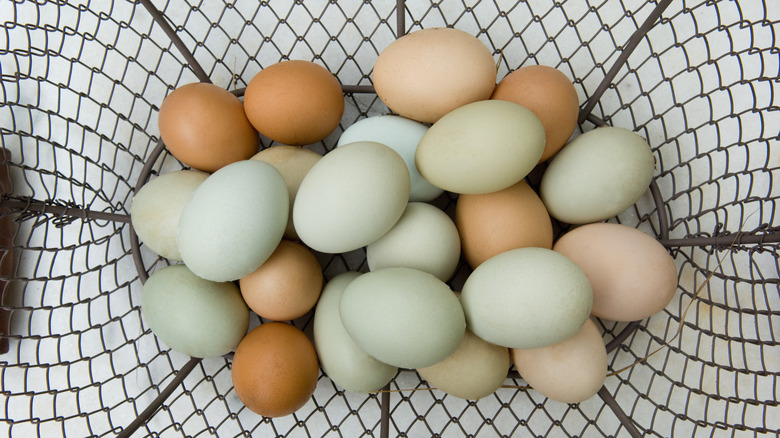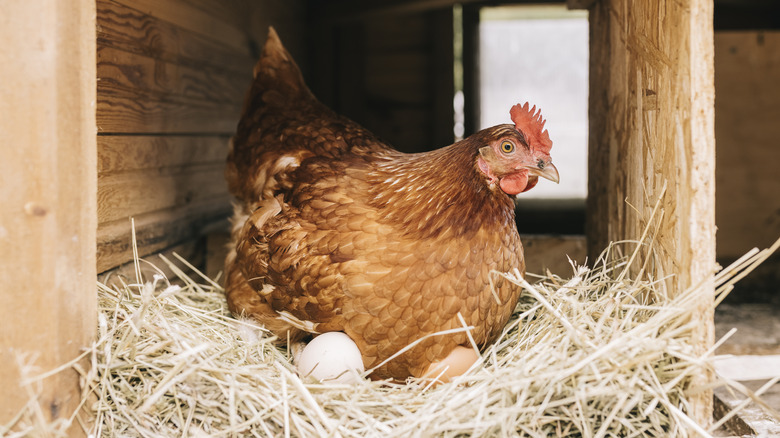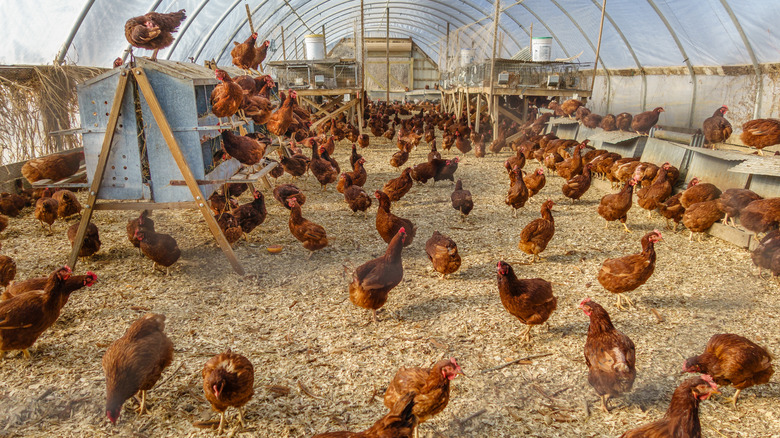The Difference Between Cage Free And Free Range Eggs
While all eggs may look the same inside the carton, the labeling on the outside is anything but. Take a walk through your supermarket's egg aisle and you'll find everything from "organic" and "pasture-raised" to "farm fresh." As you've probably already guessed, these labels are meant to clue shoppers into the life the hens had before their eggs ended up on store shelves.
These labels aren't just useful if you're interested in animal welfare and want to keep your diet cruelty-free — the classifications also carry significant implications for the eggs' quality, too. As pointed out in a 2011 study published in Annals of Animal Science, the condition in which a hen is raised greatly impacts how her eggs taste. This study also found that free-range eggs taste better than others, as the hens were far less stressed when they laid them.
But here's where things can get a bit confusing. While searching for free-range eggs, you might also run into cage-free eggs. Plenty of people likely mix up these two types, but there is a difference: Hens that lay free-range eggs can roam around outdoors, while hens that lay cage-free eggs can't.
Hens are allowed to roam outdoors on free-range farms
For eggs to be labeled "free-range," the hens that laid them need to have some access to the outdoors. Outside of that stipulation, however, regulations aren't incredibly strict. This means some farms might only offer chickens minimal outdoor space, leading to crowded conditions. While this isn't ideal, eggs from these farms still technically meet free-range requirements.
If you want a higher certification, look for egg cartons stamped with Certified Humane or American Humane seals. These indicate that the eggs' place of origin met higher ethical standards. For instance, these seals ensure that hens spend at least six hours outside each day and have at least 2 square feet of roaming area per bird. This extra room allows the chickens to exhibit more natural behaviors, like nesting, preening, and scratching, among others. (They're less likely to do so when stressed or when forced to live in overcrowded conditions). These extra requirements ultimately make for happier hens and better-tasting eggs.
Admittedly, the system isn't perfect. If you feel strongly about your eggs' quality — or the chickens' quality of life — try sourcing your free-range eggs from farms with high animal welfare standards, as these are among shoppers' most ethically produced options.
Cage-free farms keep hens indoor but not in cages
The key difference between cage-free and free-range eggs boils down to whether or not the hens have outdoor access. Cage-free hens can wander about their barn, which is certainly a step up from the cramped conditions of battery cages. These hens, however, can't roam outside. On high-welfare cage-free farms, chickens should have enough room to walk, jump, play, stretch their wings, and lay eggs in nests, just as they would naturally. Since the USDA's guidelines don't specify how much space the chickens should be given, however, many farms raise their chickens in overcrowded barns.
To ensure you're choosing eggs from well-treated hens, look for egg brands with extra certifications from animal welfare groups. Farms with these labels give each hen at least 1½ square feet of space and provide lighting that simulates natural daylight, keeping the chickens' internal clocks regulated.
While both cage-free and free-range eggs come from hens that live in conditions superior to battery cages, there's still a gap between the two groups' quality of life. If you're aiming for the highest-quality eggs produced under the best ethical standards, free-range is the way to go. While the cage-free method still has issues, it is a step up from the traditional caged method.


